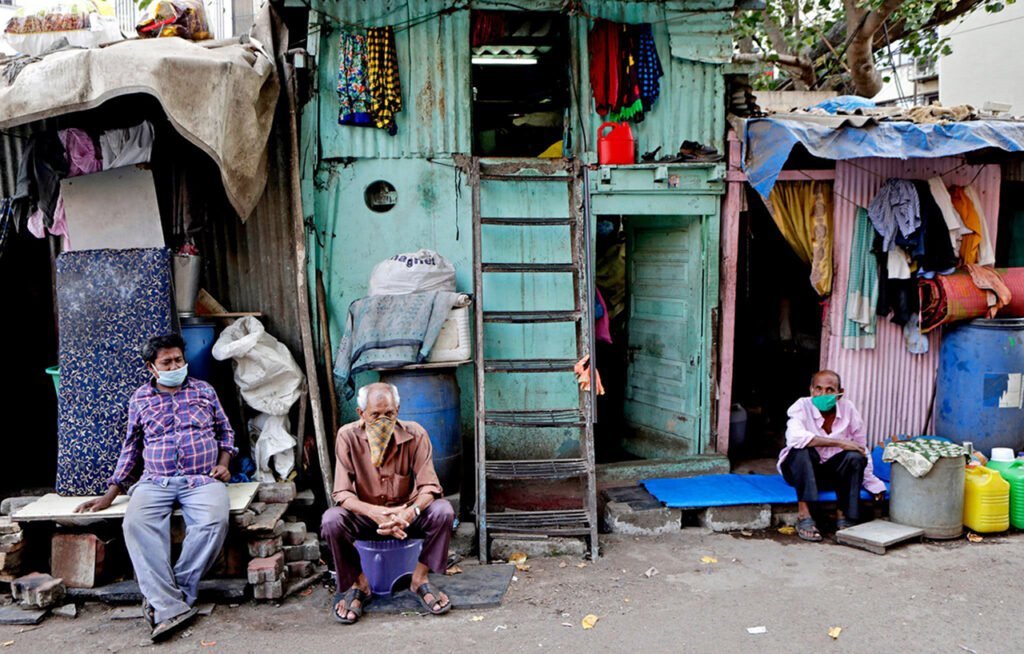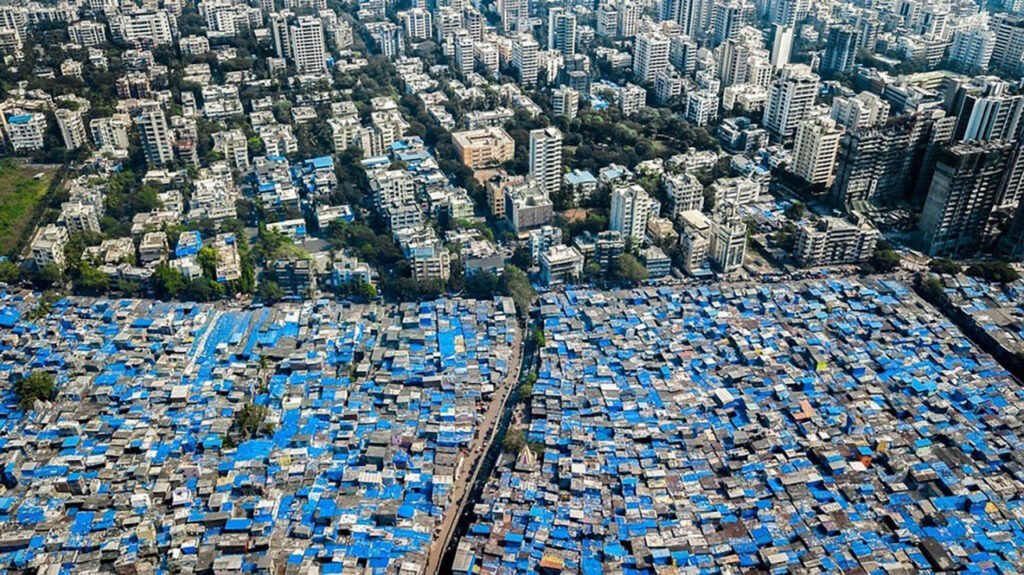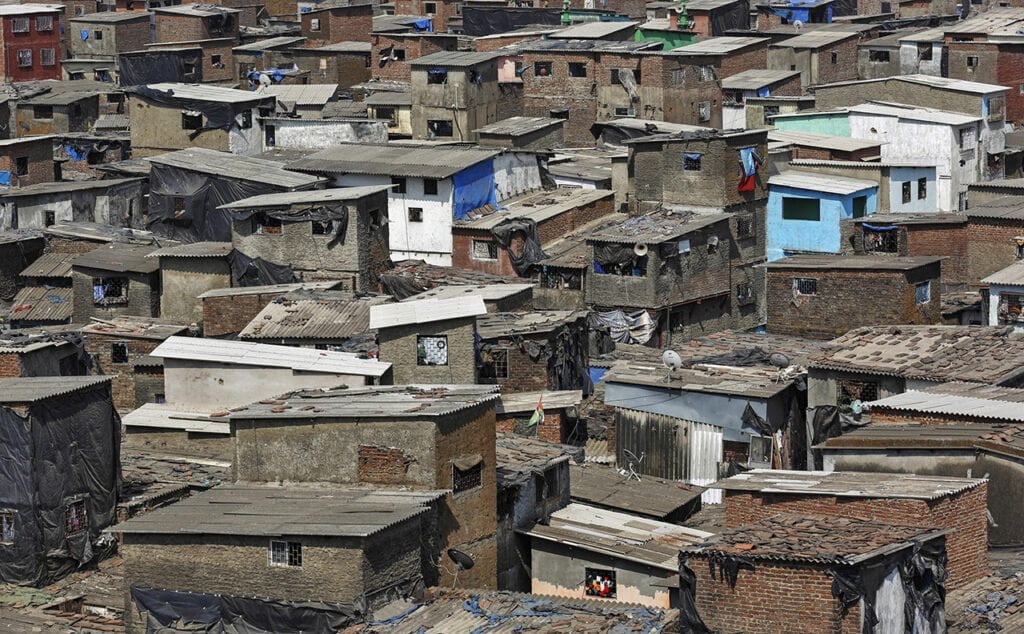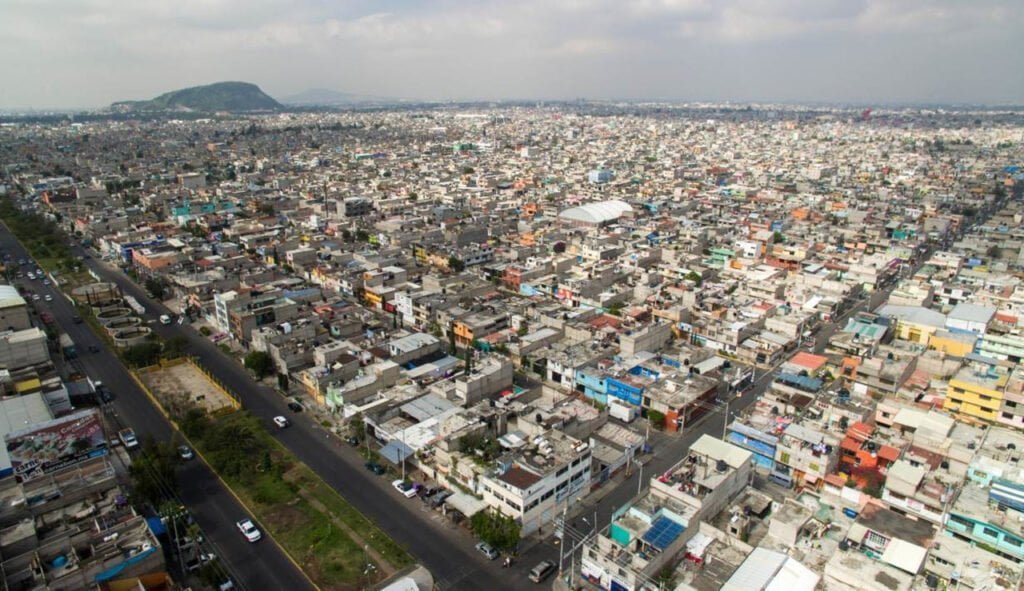People people everywhere,
All of them unaware,
Their glasses tinted with luxuries and money,
Isn’t this quite funny?
For little do they know about survival in this dynamic world,
They need their close ones to share their dreamworld,
Somebody go and wake them up from this far-fetched dream they believe to be the reality,
For they cannot survive alone this phase of mortality.
Table of Contents
Slums: The Overture

There is a feeling of assurance and togetherness between the people living in a community, a concept lost in the urban fabric of today’s world. The ever-growing vertical concrete blocks effectively manage to shelter the growing population and address the lack of availability of land but indeed fail to capture the very essence of community housing; the people and their interaction. The traditional housing systems in India which were designed to cater to the joint families with a shared public space are reflected in the slum areas of the cities. But are these slums an effective way to override this lack of communal sense within the people?
The greater part of the world’s population lives in urban areas. As per a few studies, the urban population is expected to continue to grow rapidly over the next few years, especially in Asia and Africa. Associated with the solid growth in these regions of the world is the emergence of slums or informal settlements.

Slum areas, similar to the poor who occupy them, have consistently existed yet turned out to be broader with the rise of urban development. Rising incomes, and stricter building and health regulations, have helped to virtually eliminate them affordability and homelessness. The slums areas have become ubiquitous in the developing world, where they commonly take the form of squatter settlements.
Slums are not a new phenomenon. They have been essential for the historical backdrop of most urban communities, especially in the early long stretches of urbanization and industrialization as populations boomed. The slum areas are generally the main kind of settlement reasonable and open to the poor in urban communities, where rivalry for land and benefits is extreme.
Slums – The erratic urban fabric of Mumbai

Mumbai is a populous city, but like most parts of India, it suffers from poverty. Poverty has long been a major concern of the Government of India, but as the population continues to grow, it becomes increasingly difficult to make effective changes. Mumbai continues to grow, but there is a serious problem with the gap between the rich and the poor living in slum areas. Slum communities in Mumbai and across India are gaining independence and a sense of community and are able to support themselves.
History
Late in the 17th century, Gerald Aungier attempted to draw in traders and craftsmen to Bombay. Thus, the population grew six-fold in the fourteen years between 1661 and 1675. A portion of the more prosperous traders-built houses inside the British fort. The rest lived in swarmed “local towns” around the walls. These were presumably the first slum areas to grow in Bombay. The issue of congestion surely stayed through the eighteenth century. A count made in 1794
observed 1000 houses inside the fort walls and 6500 immediately outside.

Everywhere, the nineteenth century saw the slum development give the lie to the idea of progress brought on by large-scale industrialization and the understanding and control of diseases. Bombay was no exemption. The cotton boom, trailed by the rapid growth of mills and shipping drew a large in the developed world, where the main housing problems are now those of population from the remainder of the country into a city unfit to manage them. In the middle of the 19th-century slums grew around the mills and other places of employment.
Bombay knows another reason behind the slum development. As the city developed, it took over land that was generally utilized for different purposes. The Koli fishermen were dislodged during the development of the harbour and port. Those driven out of the fishing villages improvised living space that was regularly far shabbier than before. This interaction continues even now, at the end of the 20th century.
Then again, a few towns were encysted by the urban development around the city. Dharavi, initially a town with a little tanning industry, has turned into a slum in this fashion. A considerable lot of the more established slums in Byculla and Khar were at first separate towns, with their own customary businesses.

Evolution of slums
The 1947 Rent Control Act led to the freezing of rents, which deterred private capital from creating housing stock for rental purposes. The 1976 Urban Land Ceiling and Regulation Act additionally limited the inventory of huge plots of land to house development. These limitations and the government’s powerlessness to build the stock of affordable housing gradually led to mushrooming of more slum areas.

During the 1970s and 1980s, through various acts and projects, the government began offering fundamental types of assistance such as water, toilets, electricity, pathways, street lights, conservancy, and primary health care and education to slum dwellers. However, the scale of the projects stayed restricted and didn’t make a lot of effect.
As a matter of fact, the slum areas of Mumbai are also an illustration of solidarity in variety with Indians of each faith and from every corner of the country living together. Laborers come here from all over the country, escaping poverty in their home states. Mumbai slums provide opportunities to all, from the skilled and cheap labour force to the growing city service industry to set up small manufacturing units from garments, leather, plastics, embroiderers, and food items to cater to larger formal businesses.
Slums and their effects on the surrounding
The concept of slums and their definition differ considerably across the States depending upon the socio-economic conditions or local perceptions.
Orangi Town in Karachi

Situated in the northwest outskirts of Karachi, Pakistan lies the world’s largest slum, Orangi Town. This slum area is home to over 2.4 million people. Set up right around 18 years prior, it remains the biggest town in Karachi. While it does not have a notorious reputation for poverty like many other slums across the world, the people in Orangi Town really do need to manage an absence of fundamental conveniences and administrations. The settlement’s population detonated in the early 1970s when a large number of individuals moved from East Pakistan after the 1971 war of independence.
Furthermore, the fact that this slum area lies within Karachi makes it subject to the consequences of mis planning, rapid urbanization, and other general dilemmas faced by the city itself. Regions like and including Orangi Town are hit hardest, confronting a shortage of essential necessities, including food and fuel, while additionally suffering slowly deteriorating natural conditions for which the inhabitants’ absence of monetary assets to battle their circumstance leaves them caught inside an endless loop of destitution and shamefulness.

Their burdensome living conditions are further weighted because of issues affiliated with health. Slum residents are frequently dependent upon inadequate housing conditions involving high-density settings and heavily congested living environments, consisting of entire families being stuffed into single rooms.
This, in combination with the inaccessibility of basic sanitary conditions, results in the rapid development of diseases and health conditions, such as malaria, dengue fever, and tuberculosis. These slum areas themselves have been termed an ‘environmental and demographic time bomb’, exhibiting the pressing urgency of all the problems faced by its inhabitants.
Neza: Mexico’s Self-Made City
Ciudad Nezahualcó yotl is a typical informal settlement in the metropolitan Mexico City. From the very beginning as a settlement illegally developed, planned and built in the late 1940s, Nezah has served as a powerful image of self-constructed, so-called “informal” urban development. Nether development is complex and deserves a longer story, but there are a few things that are clear.
In Mexico City, immigrants flooded the city at the end of World War II, flocking to downtown Nagaya, reminiscent of New York at the turn of the century. If you need it, there is a way. In Mexico City at the time, this meant that the development company was operating in the open ground and splitting land that had no legal right to sell.

In the 1900s, thousands of people began to migrate to Mexico’s largest slum areas in search of affordable housing. In the 1970s, rents in Mexico City were rising, encouraging poor people to buy their land in places like Chalco for $88. Although the land allowed them to build only modest concrete buildings, they could call it their own. These informal communities eventually developed into urban cities with electricity, soccer stadiums, and even a zoo. Landlords changed the city’s dreary gray by painting the house in light colors and starting to stucco. However, gangs and drug dealers still dominate, and residents struggle every day to make a living.
Jardin Bicentenario in Neza has shopping malls, hospitals, rehabilitation centres and campuses of several universities. However, the same site was a landfill of 12 million tons, and the World Bank classified it as one of the dirtiest places in the world. In 2006, efforts were made to close the landfill and begin the land reclamation process. Over time, additional plans were formed to develop a community center in the new space.
The project has helped create thousands of jobs for the people of Neza and has benefited the economy of the entire region. Although this large area is still considered one of Mexico’s slums, it is managed by three separate municipalities with unique approaches to alleviating poverty.

Conclusion
Slum development is also a significant economic force. In many cities, as much as 60 percent of employment is in the informal sector of the urban population. These slum areas are not only unavoidable; they are a sign of the success of a city. The formation of slums is an integral part of the process of growth and urban development of a city.
Only in a static (stagnant?) city does the state and status of its constituent parts remain unchanged? This is not to say that each part of a city must go through a cycle of development, deterioration, and renewal, but that at any given moment of time, there are parts that have seen better days and parts that are being newly developed or renovated.

Just as slum areas and slum dwellers need urban areas to survive, so do urban communities need slums to thrive. With enormous numbers competing for work in urban areas, it is simpler to pay low wages. However, a worker still needs to live, and without the informal settlements, the minimally acceptable salary would really hit the pockets and the profits of the rich.




